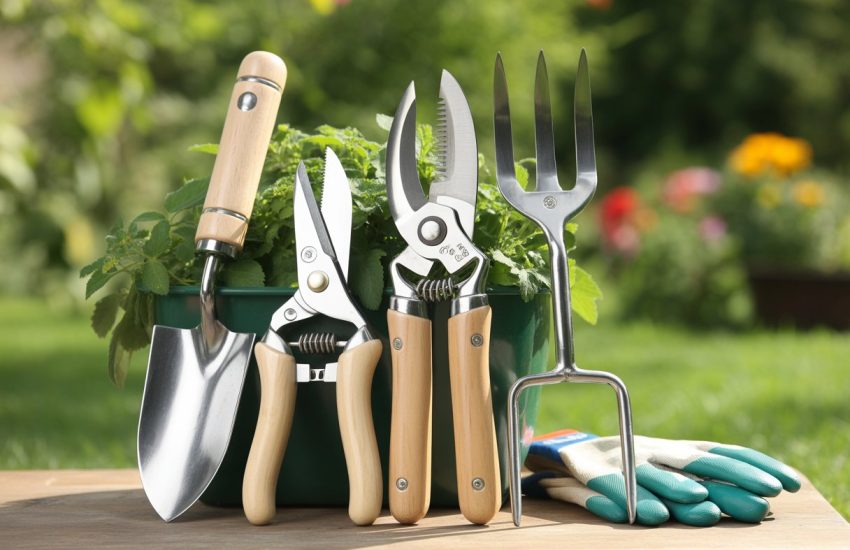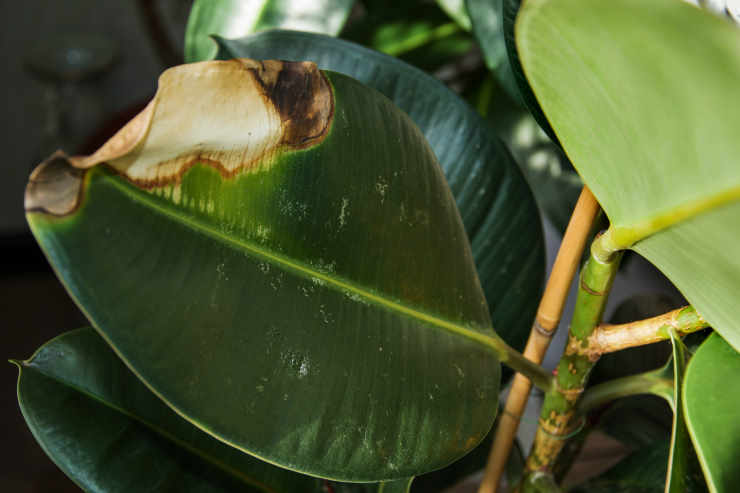Birch Trees: Plant, Grow, and Care
They naturally grow in the northern and mild northern regions, mostly as front garden trees. It has thin branches and white bark, making it look like a spider. For this reason, birch trees in winter look especially good. Within its natural spread, we can count; all of Europe, the Caucasus, Eastern Anatolia, Northern Iraq, Northwest Iran, and Siberia.
This plant generally contains essential oils, flavonoids, saponin, and vitamin C. Its most important feature is that it can dissolve edema in the body without coercing the kidneys. Tea from its leaves is also good for different illnesses, especially gout. In this article, you can find answers to your questions, from how to plant birch trees to the types of birch trees.
How to Identify Birch Trees?
To identify a birch tree, one can look at its drooping branches. Birch trees in winter are deciduous. They are mostly 20-25 (30) m tall. Their trunks have a thin bark that is snow-white. The bark scales off and falls in broad bands in the horizontal direction. A black crust replaces it. You can see plenty of resin glands on it. This can help you in order how to identify birch trees.
They are one of the types of garden trees. It is used very frequently, especially as park trees or front gardens trees. For example, the black birch trees are used as ornamental plants on roadsides, gardens, and parks. It is highly possible to spot birch trees in a garden nearby.
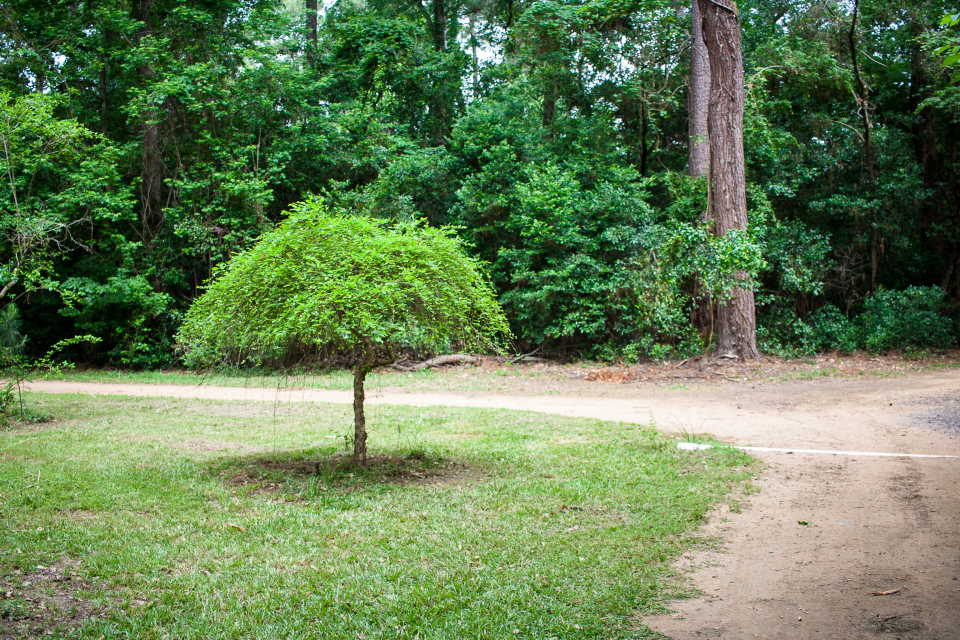
How Fast Do Birch Trees Grow?
These trees can grow very fast, reaching 8 meters high in 10 years, 18 meters in 20 years, and 25 meters. Even some types of this tree can grow up to 100 meters in optimal conditions. Fully grown trees have a narrow, conical shape with curving and dangling branches.
Birch trees are robust trees that can withstand different weather conditions. They thrive in various conditions depending on their types but mostly in full sun, light, and well-moist soil. If you want to plant birch trees in your garden, you can do it singly, in small groups.
What Is the Best Time to Plant Birch Trees?
This type of tree loves moist soil and cold weather. Therefore the best time to plant birch trees is in spring or fall. It is best to plant with shade, as the tree loves moisture. At the same time, there should be sufficient lighting. They need at least 6 hours of abundant sunlight.
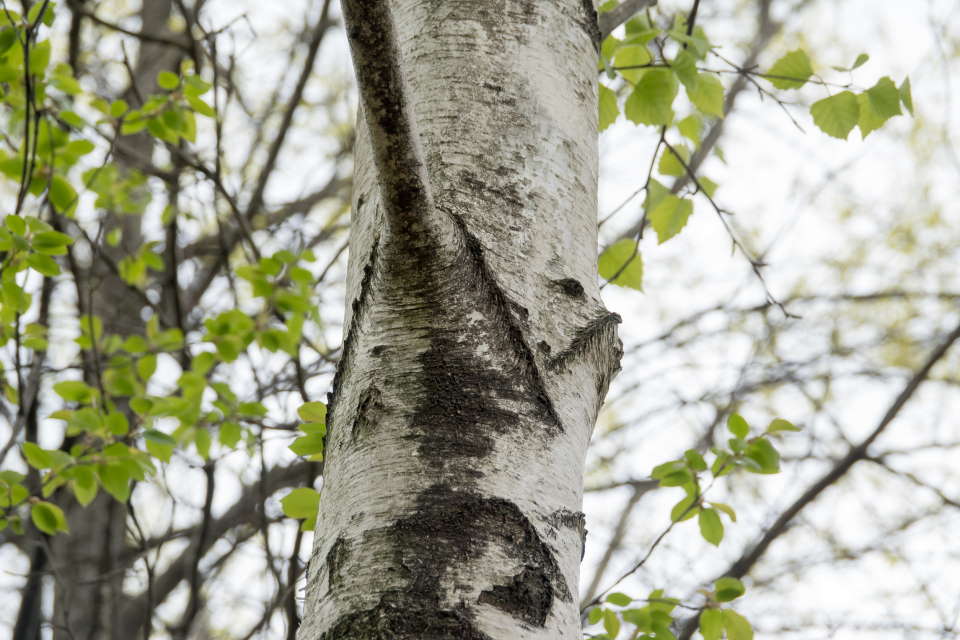
How to Plant Birch Trees?
When decorating a garden, it is very important to pay attention not only to the types of garden trees but also to the condition of the soil and the features of the relief of the adjacent landscape. For the front garden tree decoration to look as effective as possible, you also need to focus on the rigor of the planted culture and the purpose of the garden landscape.
As mentioned above, picking a moist and cold place for your birch trees in the garden is important. But the foliage needs sunlight to grow. So this location needs to be sunny for the foliage and shaded for the roots.
Secondly, dig a hole in your garden twice the size of your tree’s root. Using the best garden tools will be helpful. You must be certain that the hole is deep enough for the root to fit. To allow the tree’s root system to grow, keep the hole the same width at the top and bottom, preferably in a square form.
Next, gently drop your tree’s root into the hole with the assistance of another person. You must fill the hole with soil as one person aids by holding your tree’s body upright. Put as much soil as possible to fill the hole until you can’t see the root system. Water it right away after they’ve been planted.
Lastly, it is important to stake your tree in the first year. You can use a metal pipe or a wooden stake to support your birch trees in the garden from the roots. These stakes need to be set in the ground to support the tree. Now you know how to plant birch trees.
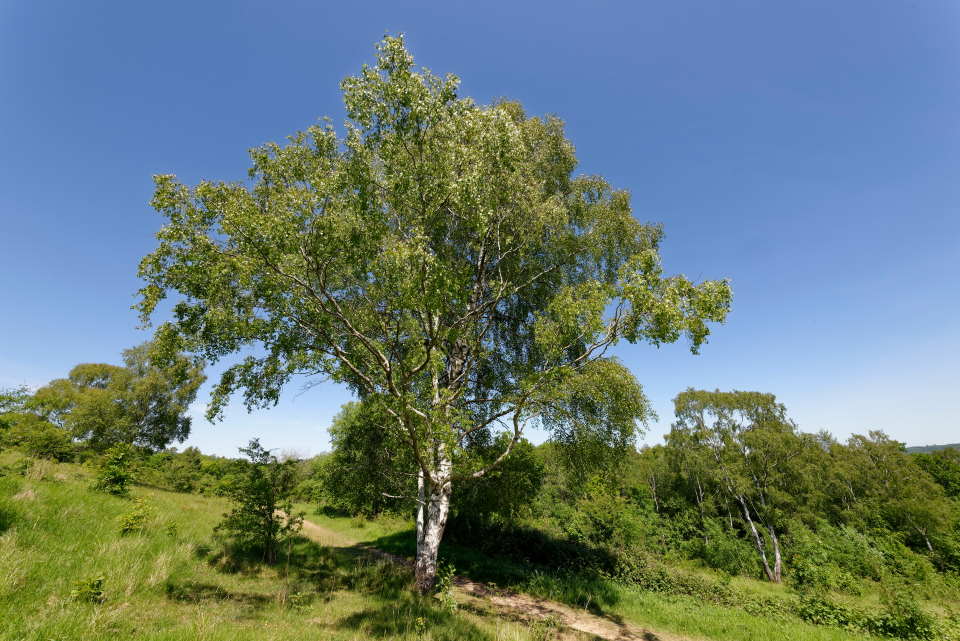
Types of Birch
Birch trees often take their names by the appearance of their leaves, branches, and trunks.
1. Paper Bark Birch Trees (Betula Papyrifera)
It is a white-bodied, densely branching tree from the birch family (Betulaceae) that may reach a height of 18-21 meters. It belongs to the Betula subgenus of the same name. This tree gets its name from its paper-like bark that can easily peel.
It is a deciduous tree of modest size. Although most examples are 18 meters long, some can grow to be 40 meters long. The bark is normally white and shiny, with thin horizontal lines and little black patterns.
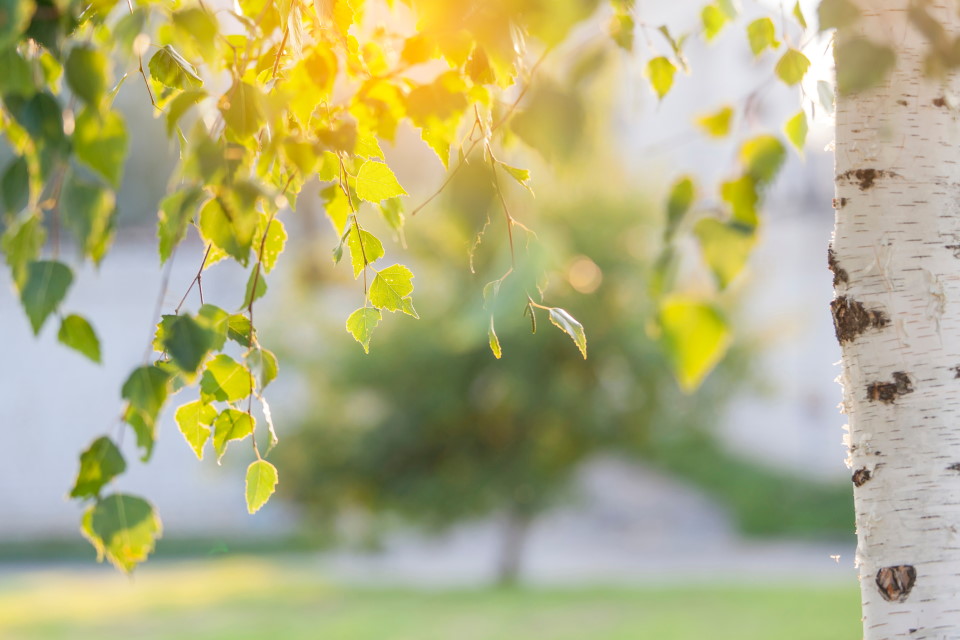
It is generally found in northern North America, Alaska, and Canada. The people of those regions generally employ the tree’s bark to construct snowshoes, canoes, sleds, cradles, snow goggles, dwelling covers, baskets, and food utensils.
Since it is native to a cold climate, it can live up to 100 years in the right weather conditions. Its bark includes medicinal and chemical compounds, some of which are also fungicides, such as betulin, which helps to keep food fresh in storage containers. Its fluid, known as birch syrup, is delicious and enjoyed in Alaska. Since it is used to make canoes, this tree is known as the canoe birch.
Leaves: Leaves are oval in form with unevenly serrated edges. The leaf blades are 4″ (10 cm) long and turn from dark green to bright yellow in the fall.
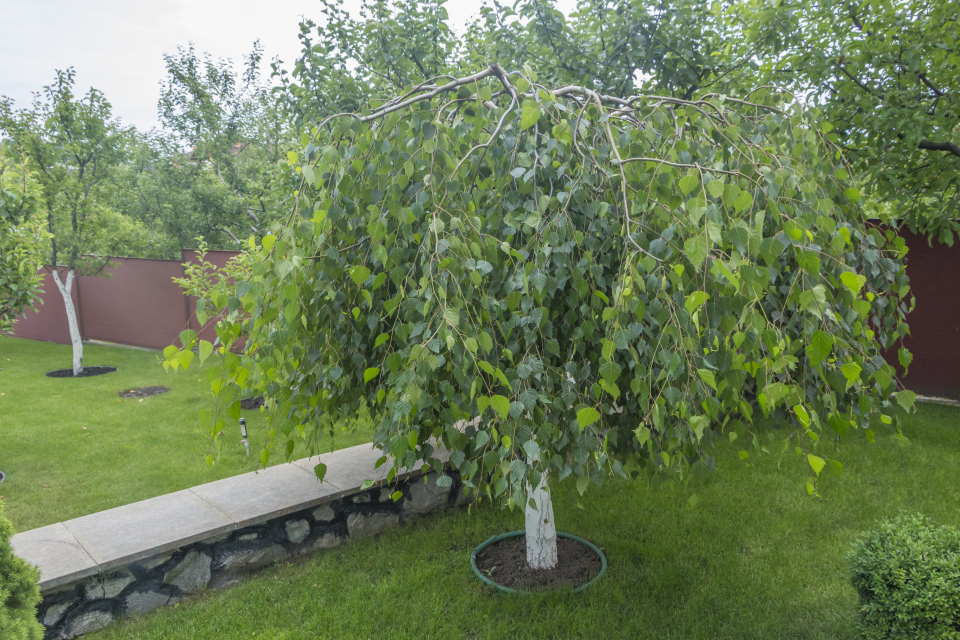
2. White Birch Trees (Betula Pubescens)
This type has oval-shaped hairy leaves and white, thin, papery peeling bark. It can grow between 10 – 20 m. The slender white trunk has upright branches, giving the tree a columnar appearance. White trees have warm yellow fall colors.
It (Betula pubescens) is a native European tree. Other names for the white trees include ‘downy’ and ‘scarlet’. White ones are often confused with silver birch trees (Betula pendula) because of their leaves. However, it has smooth pubescent shoots.
Compared to its other types, the leaves of the white trees have coarsely serrated edges.
Leaves: Simple leaves arranged alternately. Triangular leaves have a rounded base and tapered tip. Also, look for uneven, jagged margins.
3. Weeping Silver Birch Trees (Betula Pendula)
It has drooping branches and gives the tree a weeping appearance. Therefore it has a distinctive look. It has bright green leaves that turn warm yellow in fall. The leaves are oval-shaped and have double-toothed margins. As the name suggests, the bark of Betula pendula is silvery-white and has contrasting horizontal black stripes.
They are likely to grow best in large gardens as shade trees. The arched canopy, oval shape, and slender silvery trunk look stunning as a landscape tree.
They are also called Lady of the Forest, European White, and Lady Birch’.
Leaves: The bright green leaves have a distinctive triangular shape with pointed-looking edges. Its fall colors are shades of warm yellows.
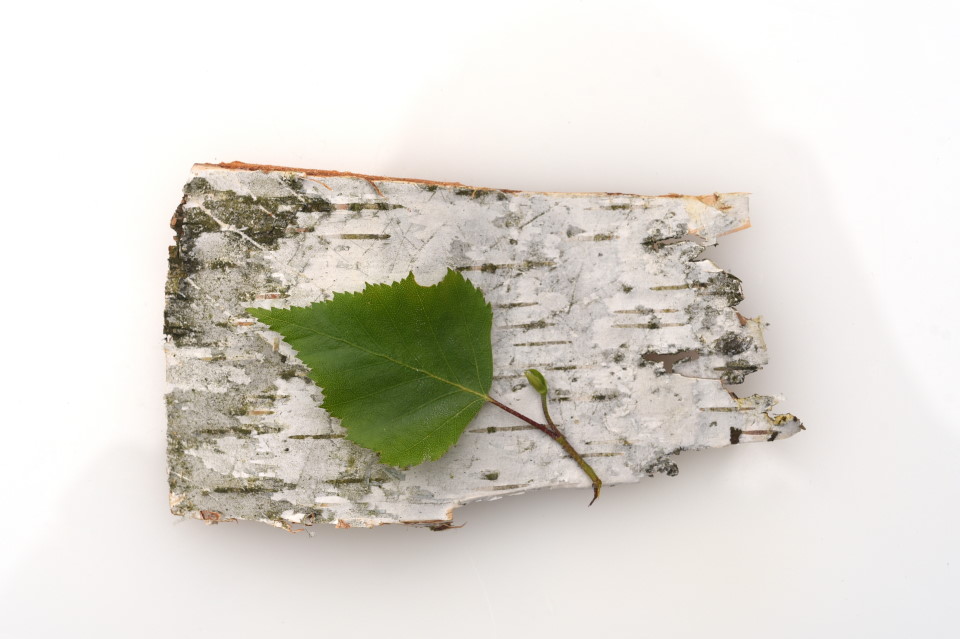
4. Yellow Birch Trees (Betula Alleghaniensis)
It is a medium-sized tree with long oval, bright green leaves, finely serrated edges, and beautiful bright yellow leaves in fall. This slender deciduous tree has leaves that grow in a conical fashion.
The tree bark starts as glossy bronze, turning hairy and papery to grey-brown.
This type can grow up to 50 to 80 ft. It grows between (15 – 24 m). Yellow trees have seasonal interest throughout the year, thanks to their beautiful bark, large pointed leaves, and bright fall colors. Because of its beauty, the yellow tree is used frequently as one of the front garden trees.
Leaves: Lanceolate shaped with irregularly toothed edges. Its dark green leaves turn bright yellow in fall with hints of lime green.
5. River Birch Trees (Betula Nigra):
It is a clustered plant with reddish-brown exfoliated bark, bright green apples, and a pyramidal crown. This fast-growing tree has smooth, hairy branches and unique buds in between. The autumn color of the tree is golden yellow.
Betula nigra generally grows up to 80 to 100 ft. (25 – 30 m) and typically has multiple slender stems. Clumping river birch trees will grow best as decorative trees in garden landscapes with wet soil.
It is easily the best choice for warm areas. This tree is the most heat tolerant of all river trees.
Leaves: Lozenge-shaped leaves with double serrated edges. The upper part of the tree’s leaves is bright green, and the underside is yellowish green. In autumn, all leaves turn bright yellow.
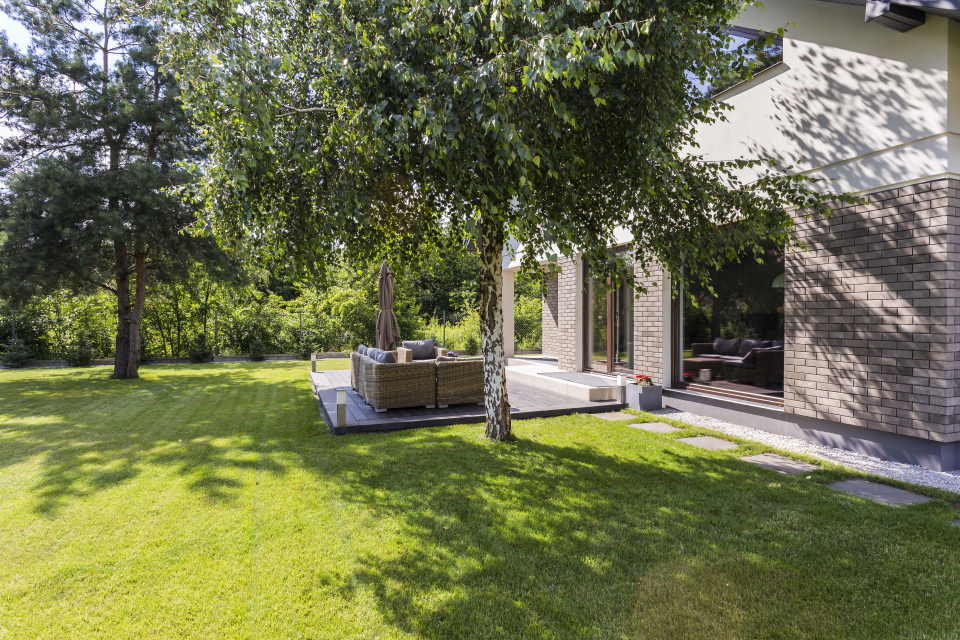
6. Gray Birch Trees (Betula Populifolia):
This type grows fast and often has multiple trunks. Its leaves are triangular with long ends. The oval leaves have a bright green upper side and a pale underside. Its bark is a light gray, almost white color, with black spots on the bark.
This type can grow up to 20 to 30 ft. They are medium-sized trees that grow between (6 – 10 m).
Gray ones can look like paper bark ones. But to tell the trees apart, look at the bark and leaves. Its bark does not peel, and the tips of the leaves are longer than paper trees.
Leaves: Triangular leaves tapering to a long tip. Look for double-toothed margins and glossy upper leaves to identify gray birch trees. The fall color is a distinguishable yellow, which can help you identify.
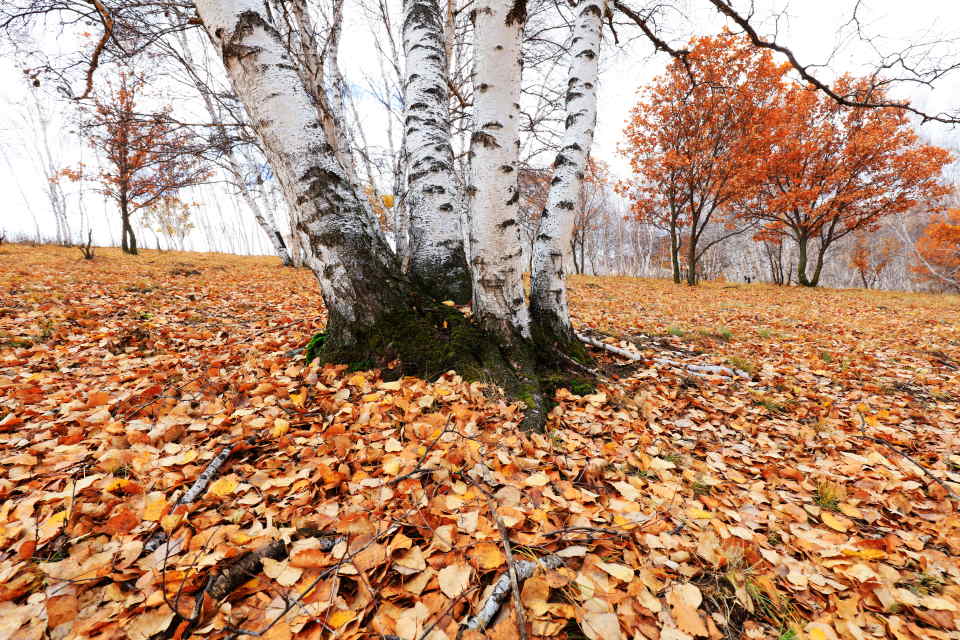
7. Cherry Birch Trees (Lenta Betula)
It is a deciduous tree with large, oval-shaped leaves with finely serrated edges. The leaves on cherry trees are the largest in the world. The drooping flowers appear before the leaves appear in the spring.
It gets its name from the scent of wintergreen in the branches, bark, and leaves.
It can grow up to 30 m tall. However, these species typically grow in residential areas between 50 and 80 ft (15 – 24 m). Because of their height and beauty, these trees are used frequently as front garden trees.
Leaves: The glossy leaves start as a light green color before turning into a darker shade and a rich golden yellow in the fall. Its leaves give off a cherry scent when crushed.
8. Dwarf Birch Trees (Betula Nana)
It is more like a shrub than a tree. This shrub plant is about 3 ft. It grows (1 m) tall and has round leaves with sharp-toothed edges. The leaves are light green and turn red in the fall.
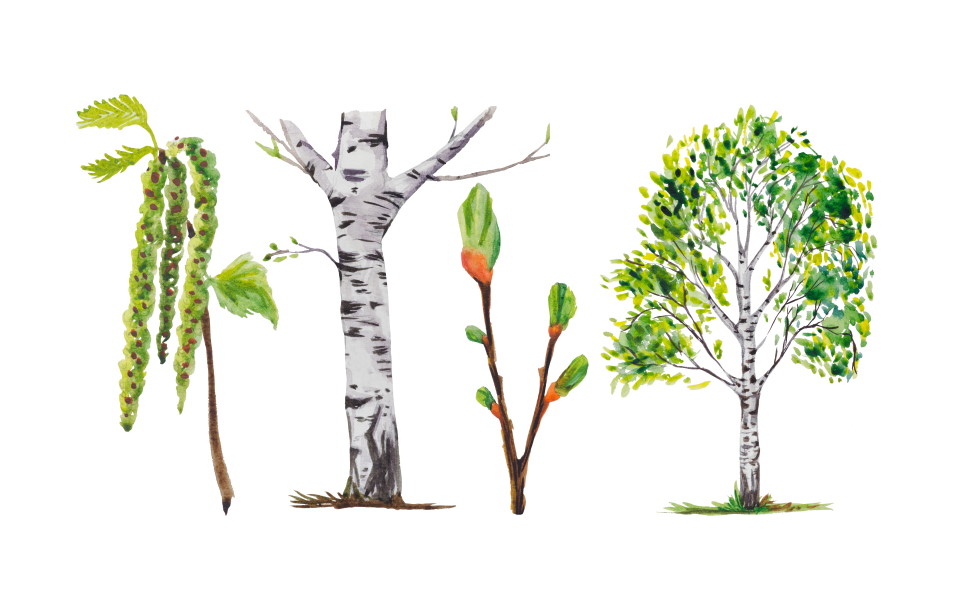
9. Himalayan Birch Trees (Betula Utilis Var. Jacquemontii):
These types have thin, papery bark, egg-shaped, hairy leaves, and short conical flowers. Like most trees, it has peeling bark that can be white, reddish-brown, or reddish-white. The bark peels off in thin layers, revealing a pinkish crust underneath. Bright green leaves measure 2″ to 4″ (5 to 10 cm).
It can grow up to 66 ft. It grows as a large shrub or tree up to (20 m) tall. The single stem branches low to the ground to form a crown of vase-shaped green leaves contrasting with the white bark.
10. Japanese White Birch Trees (Betula Platyphylla ‘Japonica’)
It is also called Asian White Birch. Betula Platyphylla has greyish-white bark, spreading branches, and pointed yellowish-green triangular leaves. The 3-inch (7.5 cm) leaves have toothed edges and cover the branches to form a pyramidal crown.
In colder climates, decorative types grow between 10-12 m (30 to 40 ft.) and 15 to 25 ft. (4.5 – 7.6 m) wide.
You may also be interested in:
Magnolia Trees: Plant, Grow & Care

